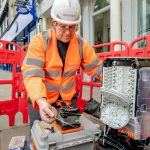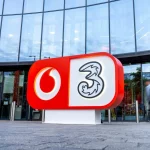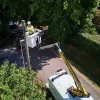O2 UK Expands Mobile 5G Standalone Network to 500 Towns and Cities

Mobile operator O2 (Virgin Media) has announced that they now have the “country’s largest 5G Standalone deployment” after extending the coverage of their new ultrafast mobile broadband network to parts of 500 towns and cities, reaching more than 70% of the UK’s population (c.49 million people). Crucially this is provided to consumers “at no extra cost“.
Just to recap. 5GSA networks are pure end-to-end 5G that can deliver ultra-low latency times, greater energy efficiency, better speeds (particularly uploads), network slicing, improved support for IoT devices, support for Voice over New Radio (VoNR or Vo5G), increased reliability and security etc. Most existing 5G networks use a Non-Standalone (NSA) approach, which is hobbled by being partly reliant upon older and slower 4G infrastructure.
The operator’s 5GSA rollout, which forms part of their wider £700m Mobile Transformation Plan, has been busy continuing at pace since it first began in February 2024 (here). In all 500 locations, O2’s 5GSA network also claims to provide “at least 90% outdoor coverage” (only slightly below EE’s 95% target), ensuring that customers looking to benefit from the technology should receive a more reliable and consistent experience.
Advertisement
The historic town of Bakewell in Derbyshire recently became the 500th location to benefit from O2’s new 5GSA network, where the milestone has been celebrated with the creation of a record-breaking giant Bakewell Tart.
Jeanie York, Chief Technology Officer at VMO2, said:
“We are investing £2m every single day to improve our mobile network and provide a more reliable experience for our customers. By expanding our 5G Standalone network to 500 towns and cities and 70% of the population, we are continuing to deliver on that and are excited about the opportunities the new network will bring. This customer-centric rollout is about future proofing our network and will pave the way for exciting customer led innovations that lie ahead.”
Device compatibility is naturally still an issue for 5GSA adoption, although such things usually resolve themselves with time as consumers gradually upgrade – many modern Smartphones do now support it on EE’s network. In fact, VMO2 says there has been a “significant increase” in the number of customers using 5GSA capable devices since they launched the service (no figures were provided), with the majority of flagship handsets now boasting access to the network.
However, it would be handy if O2 and other operators could provide coverage maps to show where their 5GSA coverage actually exists, much like they already do for 4G and 5G in general etc. This would make it much easier for consumers to judge some of their claims and test the networks properly.
Mark is a professional technology writer, IT consultant and computer engineer from Dorset (England), he also founded ISPreview in 1999 and enjoys analysing the latest telecoms and broadband developments. Find me on X (Twitter), Mastodon, Facebook, BlueSky, Threads.net and Linkedin.
Advertisement
Leave a Reply Cancel reply
Privacy Notice: Please note that news comments are anonymous, which means that we do NOT require you to enter any real personal details to post a message and display names can be almost anything you like (provided they do not contain offensive language or impersonate a real person�s legal name). By clicking to submit a post you agree to storing your entries for comment content, display name, IP and email in our database, for as long as the post remains live.
Only the submitted name and comment will be displayed in public, while the rest will be kept private (we will never share this outside of ISPreview, regardless of whether the data is real or fake). This comment system uses submitted IP, email and website address data to spot abuse and spammers. All data is transferred via an encrypted (https secure) session.























































5G is without doubt the most overhyped innovation there ever was, in some ways a big step back from 4G.
Public support was lost many years ago with a moronic, agressive and nonsensical scattered rollout.
This is flogging a dead horse, good luck to O2 obtaining planning approval for the hideous & polluting 5G infrastructure.
An embarrassment to our industry, the opposite of good communication practice.
What is your evidence?
Use of the word ‘moronic’ is not necessary in this day and age.
How is 5G ” polluting “? All 4G LTE 5G NR networks are inferior to their European counterparts!
Anecdotally, the worst quality signals I ever get are almost always short range, high frequency “5G” signals. Rarely do I find a major issue downloading files on my phone on 4G. Whenever I do have a problem, it’s always (99+%) on 5G (or, well, no signal). I can’t articulate what is directly causing those problems. But it’s across 4 phones from 3 manufacturers now (Pixel, Xiaomi and Samsung).
I suspect 800Mhz 5G bands could fare better, but high frequency bands have been disappointing so far
@Far2329Light – Err you think 5G has been a success?
Considering O2’s 5G SA is mainly based around n28, using the same sites as 4G and usually the same antennas, I don’t know what the heck you’re complaining about.
I also don’t see the point on insisting on this crusade against 5G when you clearly don’t know what it is, how it works, and how it’s being used in the UK.
Every new “G” has a few weirdos that are against it for reasons no one understands. 3G, 4G, and now 5G.
@Anon he / She is probably referring to the thousand of illegal ICNIRP declarations issued by providers and the hideous design of the poles. Can you name one benefit of 5G that the public are currently enjoying?
I just left O2.I live in and around London and they probably have the slowest 5G I have ever experienced!!
Never again. EE and Three all day long.
O2 went with a somewhat extreme approach to 5G SA. Right now, it’s only deploying n28 (low band) and/or n78 (high band) for SA. There’s no mid band to bridge the gap between the two.
This creates a problem in cities, because n78 rarely works well indoors and way too many people end up on the low band n28, which has less capacity… so you can go from +100Mbps to sub 5Mbps (or no data) in seconds.
Vodafone and EE on the other hand use n1 or n3/n1 too, making their 5G SA experience less “bipolar”.
It doesn’t help that O2 still doesn’t have blanket n78 coverage in London and SA is still not available everywhere in the city, even where they already have 5G NSA… which is a huge problem because O2 now leaves your phone on SA even if it’s weak and better 4G is available.
O2’s signal checker always says “Limited indoor coverage for 5G.” — are they going to fix this?
Nevermind a map. Surely they could include a list of the 500 towns and cities that have been switched on?
It’s odd they don’t seem to support VoNR (5G calling) on their 5G standalone
It’s also a shame 5G SA on all networks is being locked behind “allowed devices only”, what happened to the dream of buying any phone you like and having it “just work”, oh yeah.. there isn’t money (and control) for the networks selling you a phone in that
Not all devices are 5GSA capable. You need to check the technical specifications.
i think there may be some confusion here. 5GSA isn’t “locked” away behind specific devices. It’s usually just a case of the network has tried it and confirmed it worked with those devices. I can tell you that oneplus phones that are NOT on approved SA lists DO work, same for Asus which are basically never on any list because they’re too smalltime. Its rare in this day in age that they have devices that only do special stuff if they have carrier firmware running on them/must use one of their approved ones. But they’re equally not going to help you if you’ve got an SA capable phone that won’t join their SA network
o2 no 5G in Telford. But, I won’t join o2 anyway.
Instead of pushing technology that makes little difference in terms of speed and reliability (compared to 4G), they should be focusing on improving 4G coverage where 3G is being turned off. I am on holiday in Surrey and Sussex at the moment and the signal is appalling. 4G in a lot of areas within Sussex is non existent and there’s several areas where there’s no signal AT ALL. In Chichester which is a major county city, there’s little usable 4G and also there’s gaps where there’s no signal. This is unacceptable from an UK mobile network operator in 2025.